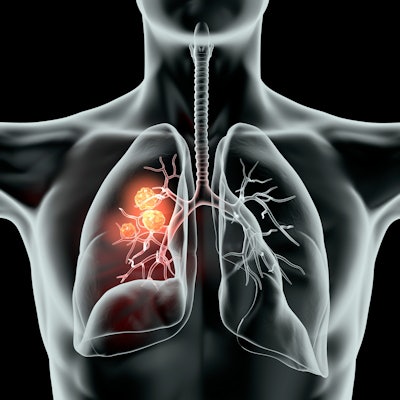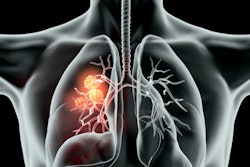
A PET/CT-based radiomics model appears promising for preselecting patients with non-small cell lung cancer (NSCLC) who may benefit from immunotherapy, according to a study published online January 22 in EJNMMI Research.
Nuclear medicine researchers at the Fourth Hospital of Hebei Medical University in Hebei based the model on standard F-18 FDG-PET/CT scans and reported that it shows the stage of a patient's PD-L1 protein expression, which is a "target" for immune checkpoint inhibitor (ICI) therapy. Knowing whether patients may respond to ICI drugs -- which can be expensive -- could provide major clinical benefits, they wrote.
"It is of great clinical significance to develop a new noninvasive, accurate radiomics method to evaluate PD-L1 expression levels and predict and filter patients who will benefit from immunotherapy," the group wrote.
PD-L1 is a protein expressed on tumors that acts as a kind of "checkpoint" to keep the body's T-cells from attacking the cancer cells. ICI therapy was developed to reactivate T-cells that otherwise would remain suppressed, and it has transformed the outlook of early-stage NSCLC patients, the authors wrote.
However, at present, PD-L1 detection methods mainly include immunohistochemistry (IHC), which requires an invasive biopsy and tumor tissue for detection and cannot dynamically reflect the expression status of PD-L1, they noted. Thus, in this study, the group aimed to develop and evaluate the predictive power of a radiomics model based on F-18 FDG-PET/CT imaging features of PD-L1 expression.
The researchers analyzed data from 334 patients with NSCLC who underwent PET/CT exams before treatment between September 2016 to July 2021. They extracted 63 PET and 61 CT features of PD-L1 expression using standard software, then used a least absolute shrinkage and selection operator (LASSO) algorithm to select the most predictive features from 233 patients.
The study authors tested three models in a validation group of 101 patients: a radiomics model, a clinical model, and a combined model. They evaluated the performance of each model based on area under receiver operating characteristic curves (AUC).
The study showed that the radiomics model exhibited good performance in predicting the different expression statuses of PD-L1 in NSCLC patients and that its predictive performance was similar to that of the combined model.
| Predicting PD-L1 expression status in NSCLC patients using F-18 FDG-PET/CT radiomics (n = 101) | |||
| Measure | Clinical model | Radiomics model | Combined model |
| AUC | 0.640 | 0.761 | 0.769 |
| Sensitivity | 65% | 69% | 69% |
| Specificity | 66% | 72% | 68% |
| Accuracy | 65% | 70% | 68% |
Unlike the clinical model, the radiomics model for predicting the expression of PD-L1 in NSCLC patients is noninvasive and can reflect the changes in PD-L1 in patient tumors in real-time, the authors wrote. Moreover, radiomics can perform functional imaging of tumors at the molecular and cellular levels, reflecting the overall expression of PD-L1 in tumor lesions, they added.
"In future studies, we will perform a more detailed stratification of PD-L1 expression and strive to provide more accurate and detailed services for clinical practice," the group concluded.



















